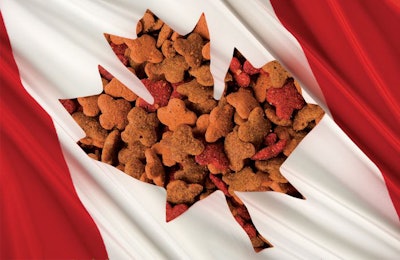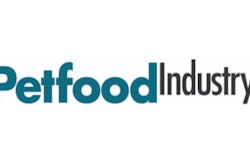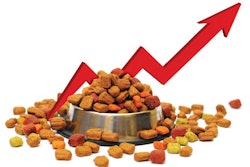
Several Canadian regulations and governmental organization have jurisdiction over dog and cat food produced in the country. In addition, some Canadian pet food producers follow legislation and guidelines set in the United States to ensure that their products can be exported to the world’s largest pet food market.
“If Canadians want to sell their products in the US, generally we would adhere to the guidelines set up by AFFCO,” Margo Crump, founder and CEO of Crumps’ Naturals. “And then one of the requirements is to have the Canadian food inspection agency audit us each year on behalf of the USDA. Typically, there aren't too many differences. We just follow the American guidelines.”
Despite this regulatory complexity, or perhaps because of it, the “Made in Canada” label lends a cachet of quality and credibility to pet foods, Canadian pet food makers told Petfood Industry. That air of integrity helps those Canadian companies sell dog and cat food in foreign markets.
“It's huge for us,” said Annabelle Immega, trade marketing manager for Petcurean. “We have our ‘Made in Canada’ logo on all our bags. We also use ‘Made in Canada’ point of sale materials. It's really nice, kind of trust factor. We find that both our retail partners and our customers really like that. Both in North America and overseas, especially in China, being made in Canada is a really big selling feature for us. It comes with that extra trust, knowing that we have really high standards, high regulatory bodies and standards.”
The Government of Canada Competition Bureau draws a distinction between "Product of Canada" and "Made in Canada" claims. "Product of Canada" claims are subject to a higher threshold of Canadian content (98 percent), while "Made in Canada" claims are subject to a 51 percent threshold of Canadian content. A statement that the product contains imported content should accompany these “Made in Canada” claims, according to enforcement guidelines.
Labeling regulations for Canadian pet food
Another Canadian law that affects pet food labeling is the nation’s bilingual status. Products must be labeled in both English and French in equal sized fonts. Fitting both languages on a package can be a challenge, said Crump.
Regional differences in the US can also pose problems, she said.
“Another different thing between the US and Canada is that each state has different standards,” she said. “That's probably the biggest challenge - figuring out all the regulatory requirements.”
Exporting a pet food or treat to the US can be a challenge too, she said, if that product contains a novel ingredient or even a different form of a conventional ingredient.
“We currently export split elk antler into the US as a chew,” she said. “We ground it down and put it into a product we call plaque busters. Then I learned that ground elk antler is not an approved ingredient according to AAFCO guidelines. So, when I phoned them to inquire as to whether we could use it, given that we're already selling the whole form, I was told that it would be at least one to three years to get that as an approved ingredient.”
Regulations covering Canadian pet food
A variety of regulations cover Canadian pet food, reported Food In Canada. Some of those rules and legislative bodies include:
Enhanced Animal Health Safeguards - makes it illegal for certain materials to be fed to any animal, including dogs and cats.
Consumer Packaging and Labelling Act - specifies how pet foods may be marketed to consumers, including naming and what must be included on pet food labels.
Canadian Food Inspection Agency – regulates importation of pet foods containing animal products.
Guide for the Labelling and Advertising of Pet Foods - provides voluntary standardization of labeling and advertising of pet foods and guidelines for enforcement of infractions.
















